BETWEEN MARCH and May of 2018, I made a journey through the American Midwest, an area known as Tornado Alley, where the most tornadoes in the world hit. Every spring hundreds of storms thunder over the Alley. They grow, whirl, destroy and fade away randomly, not following any rules or patterns yet influencing the lives of thousands on their way.
From Dallas, Texas, I travelled through seven states to Sioux Falls, South Dakota. I saw visited towns that were wiped out and people who encountered severe weather. Some were chasing twisters to get an adrenaline fix, others had spent their lives trying to understand the science of the twirls.
Some people who had lost everything: their homes, their businesses, their cars, and even a valuable Beatles collection. I met a mother who had lost her 5-year-old daughter to the wind and rubble. I heard a story about a vortex destroying a church but leaving an altar and a Bible untouched.
Everyone has a story to tell, yet nobody knows where and why tornadoes strike. There is no scientific connection between climate change and tornadoes, but it seems that the warmer the Bay of Mexico is, the more tornadoes hit the area.
MAALIS–TOUKOKUUSSA 2018 matkustin läpi Yhdysvaltain keskilännen, jota kutsutaan myös nimellä Tornado Alley eli tornadokuja. Se on alue, johon iskee eniten tornadoja maailmassa. Vuosittain sadat myrskyt syntyvät, kylvävät tuhoa ja katoavat siellä täysin sattumanvaraisesti, Matkallaan tornadot vaikuttavat tuhansien tielleen osuneiden ihmisten elämään.
Ajoin Teksasin Dallasista seitsemän osavaltion poikki Etelä-Dakotan Sioux Fallsiin. Tällä matkalla näin jäljettömiin pyyhkiytyneitä kaupunkeja, ja tapasin ihmisiä, jotka syystä tai toisesta olivat hyvin kiinnostuneita pyörremyrskyistä. Jotkut heistä jahtasivat tornadoja jännityksen ja adrenaliinin toivossa, toiset tutkivat ja yrittivät ymmärtää tätä sääilmiötä.
Kohtasin myös ihmisiä, jotka olivat menettäneet kaiken tornadojen takia: Beatles-kokoelman, auton, työn ja kodin. Kuulin tarinan tornadosta, joka tuhosi kokonaisen kirkon, mutta jätti alttarin ja Raamatun koskemattomiksi. Tapasin äidin, joka oli menettänyt viisivuotiaan tyttären myrskytuuleen ja raunioihin.
Kukaan ei tiedä minne ja miksi tornadot iskevät. Niiden yhteydestä ilmastonmuutoksen ei ole tieteellistä näyttöä – mutta mitä enemmän Meksikonlahti lämpenee, sitä useammin tornadot tuntuvat alueelle iskevän.
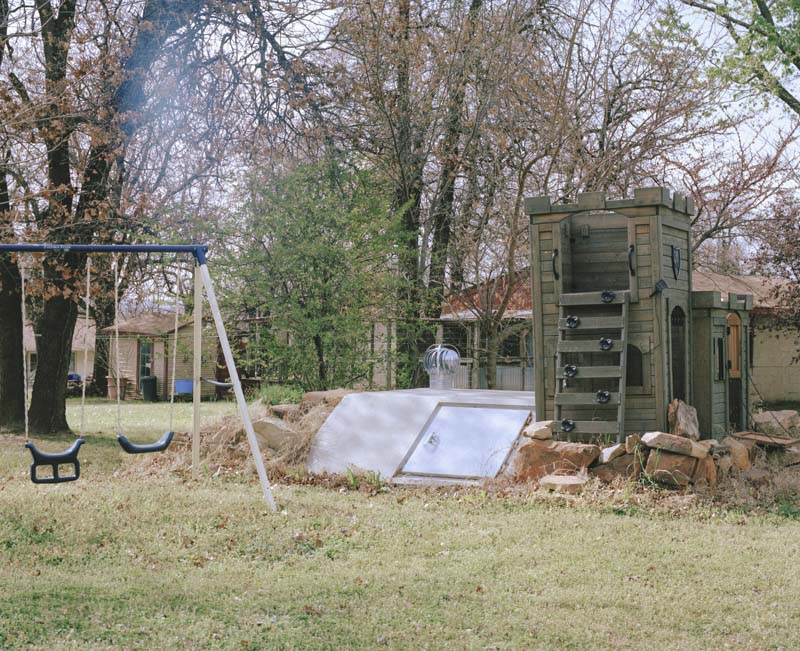
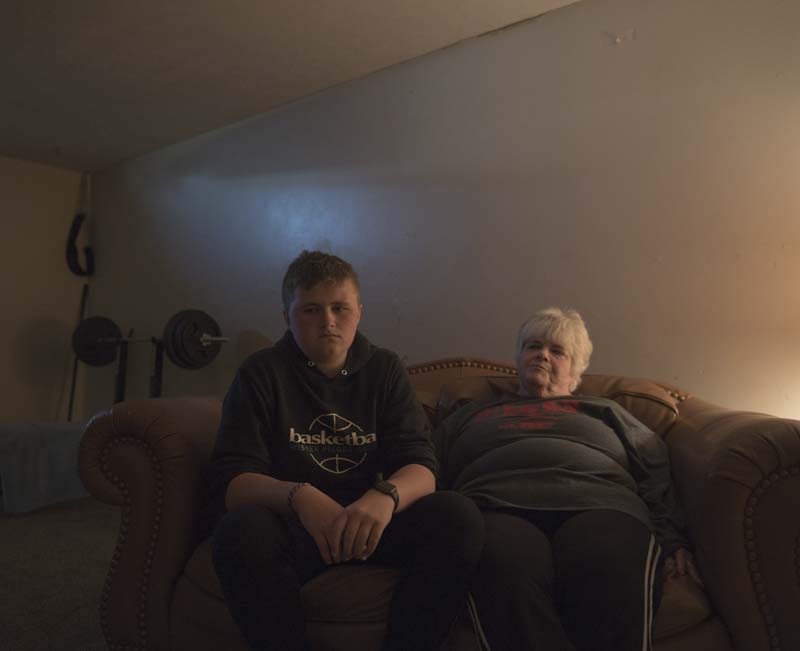
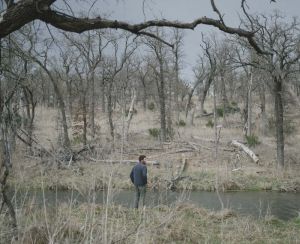
“My parents are storm chasers. As a child, I sometimes came home and saw a note on a kitchen table saying “Went tornado chasing, go to your grandparents”. I was never scared for them though. I´ve been chasing storms with them a few times. It´s exciting. First, you see clouds rotating, faster and faster, and then they drop down and form a tail. Sometimes winds get so strong you can´t even shut the car doors.”
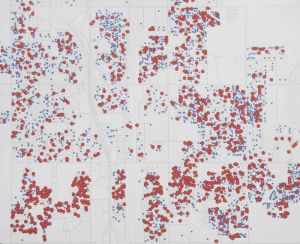
The last big tornado hit Moore in May 2013. Winds were as strong as 350 km/h. The tornado was 2,1 km wide and stayed on the ground for over 27 km long path.
There were 24 fatalities. 1000 homes and 60 businesses destroyed. In total there was over 173,000 tons of debris.
During spring seasons it is not unusual to hear storm sirens go off weekly in Tornado Alley. That is when people run to their backyards and hide in their storm shelters or cellars. Some open a can of beer and stay on their porch to watch in wonder. That is, until, the tornado comes right over your house. After that, you won’t leave your shelter until the sky is blue again. Everyone has a story to tell, yet nobody exactly knows where and why tornadoes strike.

“Sometimes it´s so rainy you don´t even see a tornado from the rain.
Once I was driving when I noticed there was a tornado following me. It was chasing me! I drove as fast as I could and luckily the tornado turned around. It sounded like a hundred trains.”
Most tornadoes in the world hit the American Midwest, an area also known as Tornado Alley. Every spring hundreds of storms thunder over the Alley. These twisters grow, whirl, destroy and fade away randomly, not following any rules or patterns yet influencing the lives of thousands on their way.
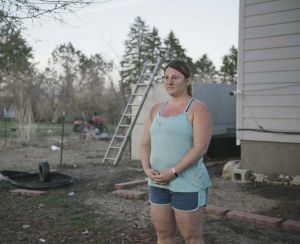
“I just came back from work to our trailer. I had moved to Pilger recently with my two daughters because I thought Pilger would be a safe little town for them.
My mum brought kids home, she said a tornado is coming. We went hiding to our bathroom. When sirens went off, I took my kids and started to run to some shelter outside. Nobody ever saw our trailer again.
That´s when everything blacked out. I have no memory of a tornado. My mother found me and my Cali lying on a street. I had a metal piece sticking from my head and another in my thigh. My femur was broken. Cali was death by my side. She was only five. My other girl Robin had just turned four and she was screaming and running around a grain elevator.
I spent a month in coma in a hospital in Omaha. They thought I wouldn´t survive. But I did. I learnt to walk again and I came back to Pilger. It´s not a bad town, I love Pilger.
I didn´t have insurance for my trailer but Mennonites built me a new house from all donations. We now have a shelter too. Sirens went off once and we didn´t leave the shelter until the sky was blue again.
I suffer from PTSD. Anything can trigger it and I crash and start crying. I guess it takes time to heal.”


“As a meteorologist, I´ve heard so many myths about tornadoes. A lot of people think tornadoes don´t hit downtowns or cross rivers. But of course, they do, they often jump over rivers.
Predicting severe storms and especially tornadoes is really difficult. It´s almost impossible to know where they will strike. An average tornado moves Southwest to Northeast in the U.S., but tornadoes have been known to move in any direction. We use computer models and look for humidity and dew points as well as temperatures of the air. When
waters in the Gulf of Mexico are warmer the risk is higher.”
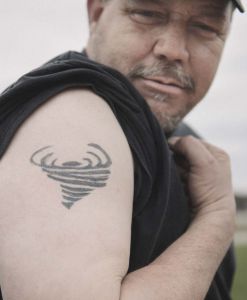
“When I was seven I was on a holiday with my mum and sister. We were driving on an interstate in Texas and it was pretty stormy and just getting worse and worse. There was a massive hail and winds were blowing like crazy. I was scared in the backseat and mum told us to be quiet. And then I saw it, my first tornado.
For years I was really scared of storms. Then I became fascinated by them. I wanted to study everything I could and I wanted to know all about them.
In 1991 they were forecasting severe weather. I took my parents´ car and my dad´s new video camera and drove to Western Oklahoma to look for tornadoes. I sat an hour in the car and saw that vortex coming. It was a F4 tornado, a monster, I had no idea what I was doing but I felt like that was the greatest high I had ever felt in my life.
I wanted to see more of them, film them and sell videos to TV stations. I thought it would be easy. Between 1991-1994 I saw no tornadoes. But it´s like a drug. The best drug you´ll ever have. You will do anything to see them again and you just cannot stop.
Luckily I found a partner who was like me. We learnt new ways to approach tornadoes, to go around them and safely go really close to them. Between 1999-2007 we saw about 40 tornadoes a year. In my storm chasing history of 27 years I´ve documented 516 tornadoes on my camera.
I started a company. I wanted to show people what I had seen, let them feel the same feelings. At first it wasn´t a lot of customers but just enough to keep the business running. But I still didn´t really understand why some storms became tornadoes and some didn´t. I always wanted to know more.
A good friend of mine died when storm chasing in 2013.
It took me three years to figure out what happened. But in May 2016 we finally achieved in getting a probe inside a tornado.
I now call the probe my bitch. It´s a badass. And we got amazing data! Winds were 380 km/h and the footage we got was great.
